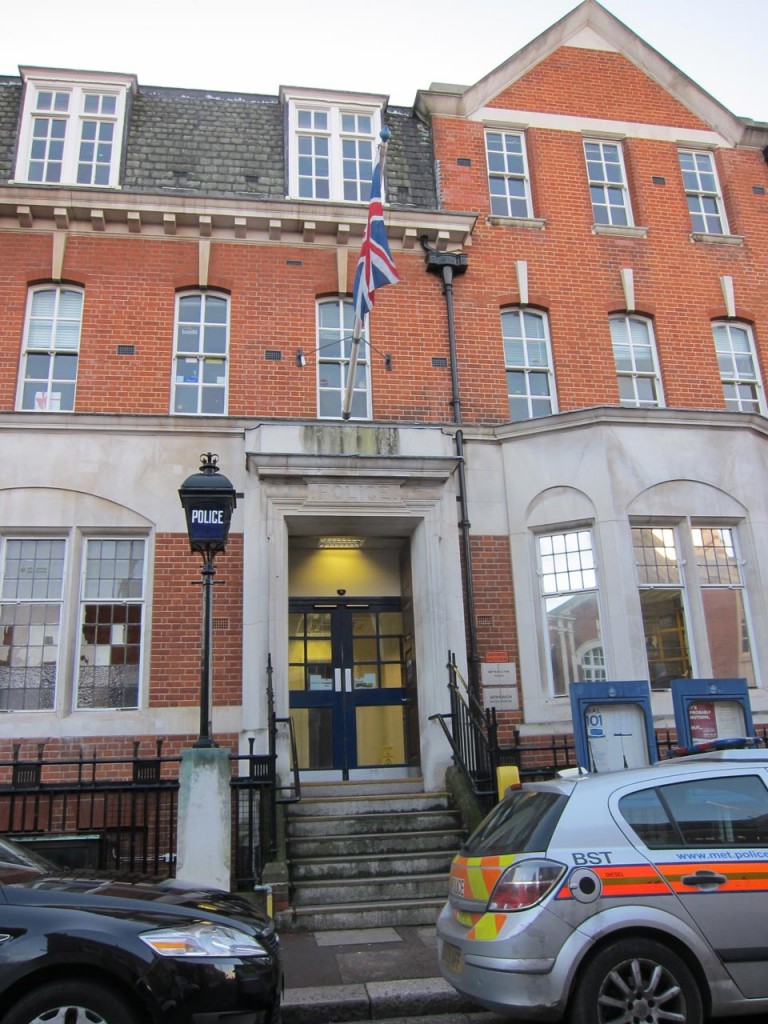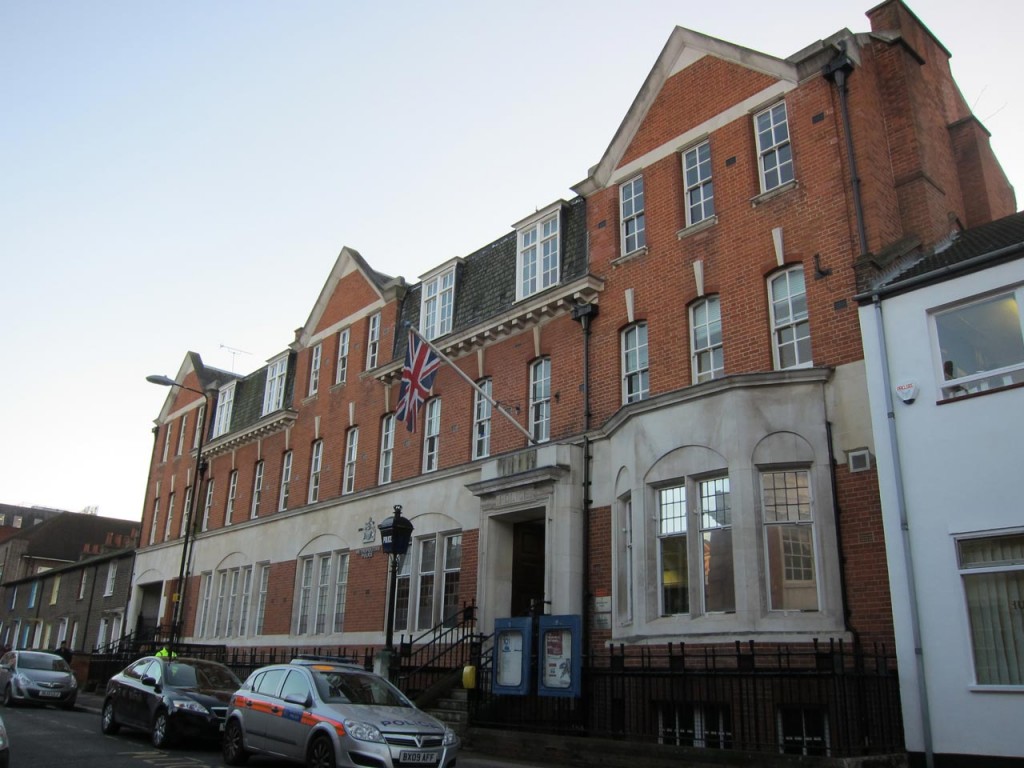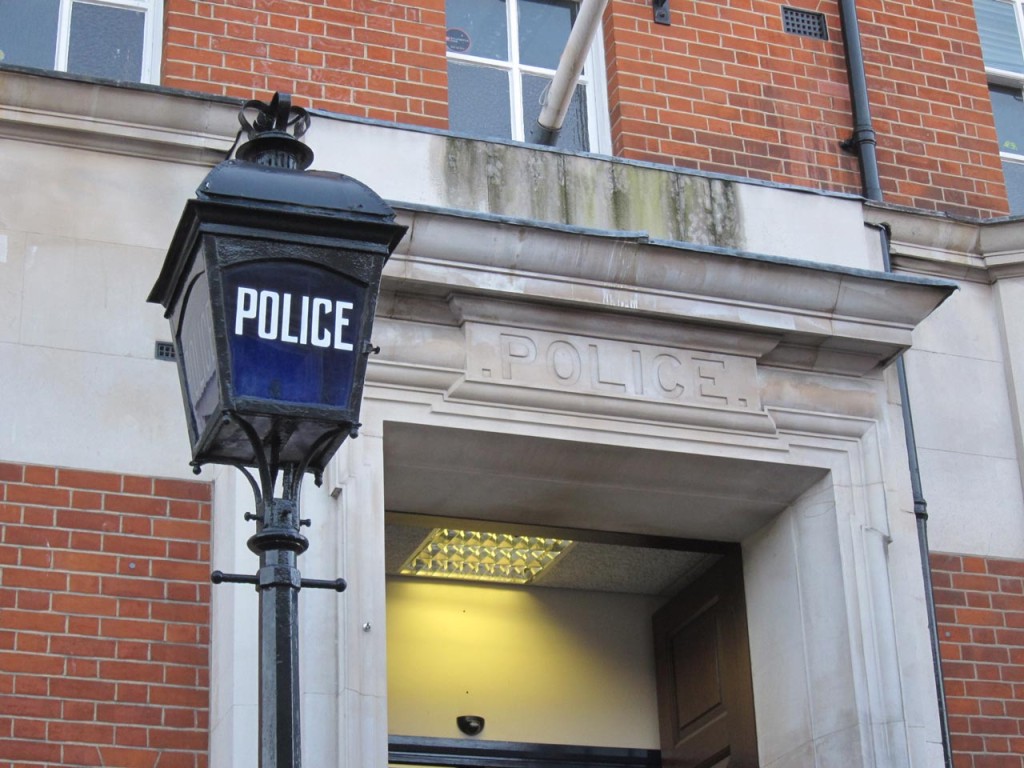
What has Woolwich done to deserve this? The Victorian post office has been demolished and its architectural adornments put into storage, the 124 year old Woolwich Free Ferry is threatened with closure, as is the 126 year old Woolwich Fire Station and now there is a proposal to close Woolwich Police Station. The police station in Market Street is a comparative youngster; it was built in 1909 – 10, just 103 years ago, though there has been a police station in Woolwich since 1840 according to English Heritage’s amazing book about Woolwich.
The Mayor’s Office of Policing and Crime (MOPAC) have proposed closure of 65 police stations across London in their draft Estate Strategy 2013-2016 which has just been issued for consultation. This includes three out of the five Greenwich police stations, as shown on the map snippet below taken from the Guardian’s datablog: Woolwich, Thamesmead and Greenwich police stations would close leaving just Plumstead and Eltham in the borough. Plumstead would be the only 24 hour station in Greenwich, so I assume that means it will be the borough’s “Grip and Pace” centre. The what centre? In the Metropolitan Police’s own words:
The new model will also see the introduction of war room-style ‘Grip and Pace’ centres where senior officers will have daily conferences with key staff, armed with the latest intelligence and data to coordinate police activities and ensure all the right resources are being used in the right places at the right times.
The changes, as you might have guessed, are being made to save money – the aim is to reduce the cost of police buildings by 30% from £205 million a year to £140 million by 2016, but at the same time they will try:
To achieve these cost and space reductions whilst enhancing the opportunities for members of the public to meet with the police through providing more access facilities in buildings across both the MPS and wider public estates as part of the overall accessibility strategy to the MPS
The justification for the cuts seems to be partly that the public interactions with the police via a police station front desk have reduced compared to other ways of contacting the police, and also that the police are more distributed through the safer neighbourhood teams.
There are a series of consultation events covering these and other changes to London policing. In Greenwich this will be at King William Court, University of Greenwich Tuesday, 29 January, 2013 from 8.00pm to 9.00pm. You will need to register if you want to attend.

Woolwich Police Station is a Grade II listed building which was designed by John Dixon Butler who was then the Police Architect and Surveyor. Butler also designed the Magistrates Court on the opposite side of market street and a number of other police buildings throughout London, including Greenwich Magistrates Court, Hackney Police Station, Shoreditch Police Station and Magistrates Court and Clerkenwell Magistrates Court. The Survey of London on Woolwich describes the Woolwich Police Station as “a strong example of Dixon Butler’s work and a subtly elegant expression of authority.” Its listing describes it as having a “restrained Queen Anne facade” and:
To Market Street, a wide and largely symmetrical frontage is of sixteen windows bays, organised into a five parts, with a steep gable with stone copings marking the end and central sections, between which are second floor dropped slated mansard roofs over a dentillated cornice. The ground floor has a deep ashlar band, the pedestrian entrance to the right hand side has an advanced ashlar entrance with ‘police’ inscribed in the frieze below the prominent cornice, and to the right an ashlar canted bay. Pair of front doors of panelled hard wood, and the stone architrave carries the 1910 date. There is a carriage entrance to the left side, this and the ground floor tripartite windows are under inset segmental arches. The carriage entrance is lined with glazed bricks, white above a brown dado. The first floor windows have exaggerated slender stone keyblocks. Rear elevation has irregular window arrangement, these under gauged brick arches, and a single storey flat-roofed extension. To the rear is a projecting cell block wing with gauged red brick arches over the sash windows; seven small cell windows, placed high, one replaced with taller window, these with small pane iron frames, chamfered stone heads and stone cills. Boundary wall to yard survives in part, but the former stable buildings to rear have been substantially rebuilt.
The listing also points out the particularly strong group value of the police station with the other Victorian and Edwardian municipal buildings of this part of Woolwich. The draft Woolwich Master Plan says of this “Bathway Quarter”:
This area has a rich character which should be preserved though sensitive residential-led refurbishment with active uses at ground floor to create a distinct urban quarter. This area has the potential to be a high quality, high-specification, loft-style place with bars, galleries and artists’ studios together with other uses such as a jazz club and creative industries such as architect’s studios.
Hopefully this means the building will be preserved even if it is no longer a police station.






